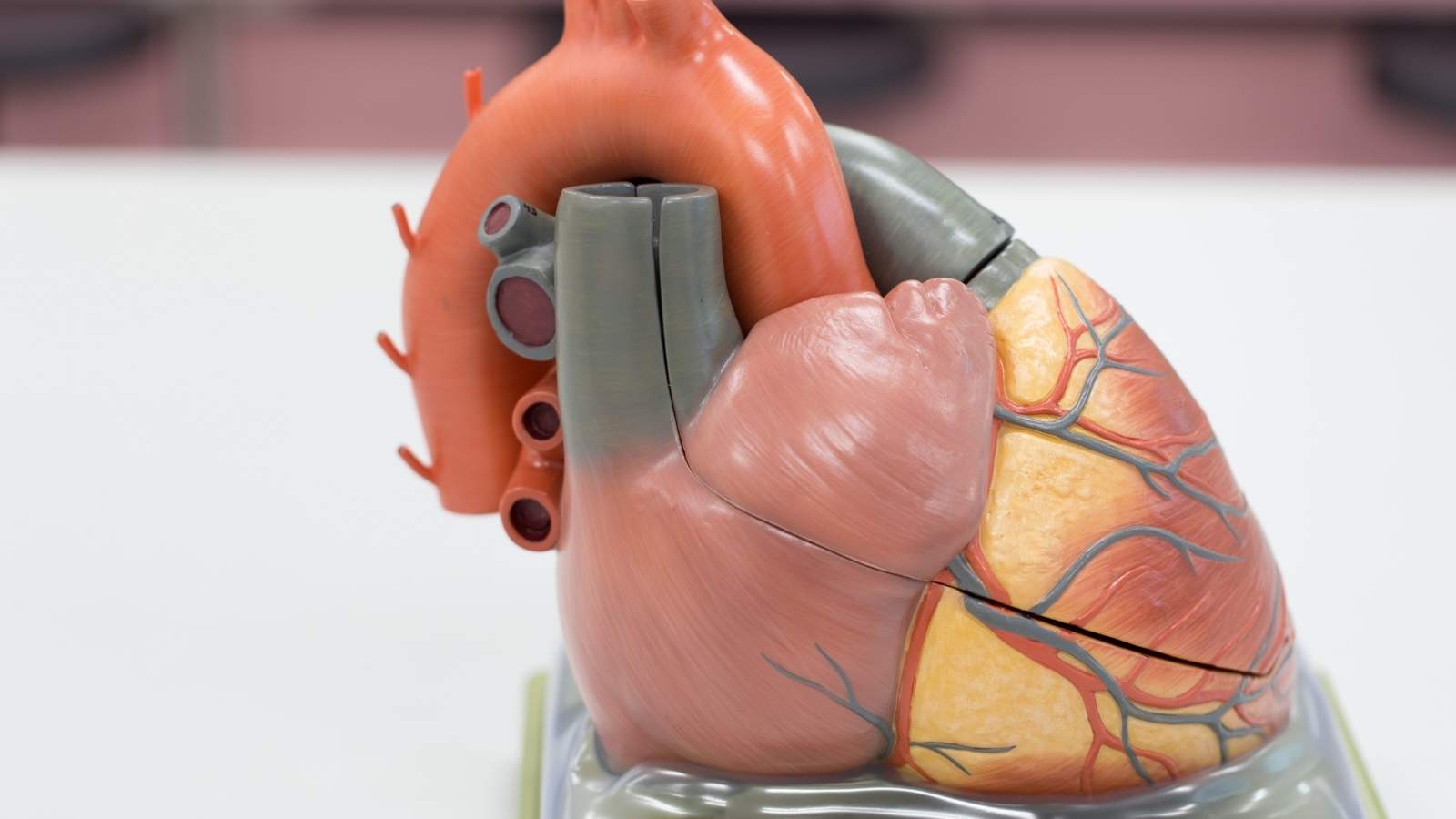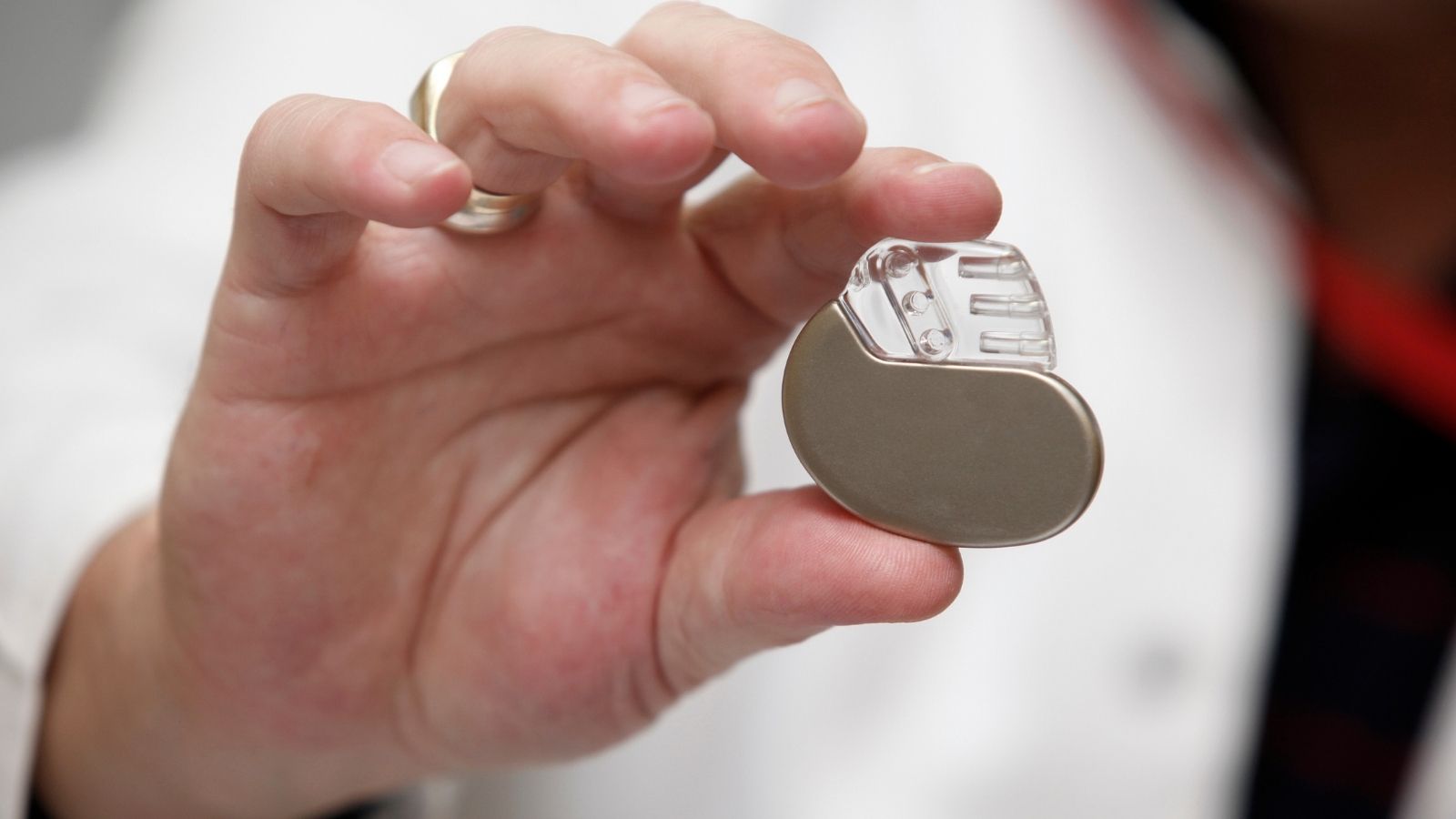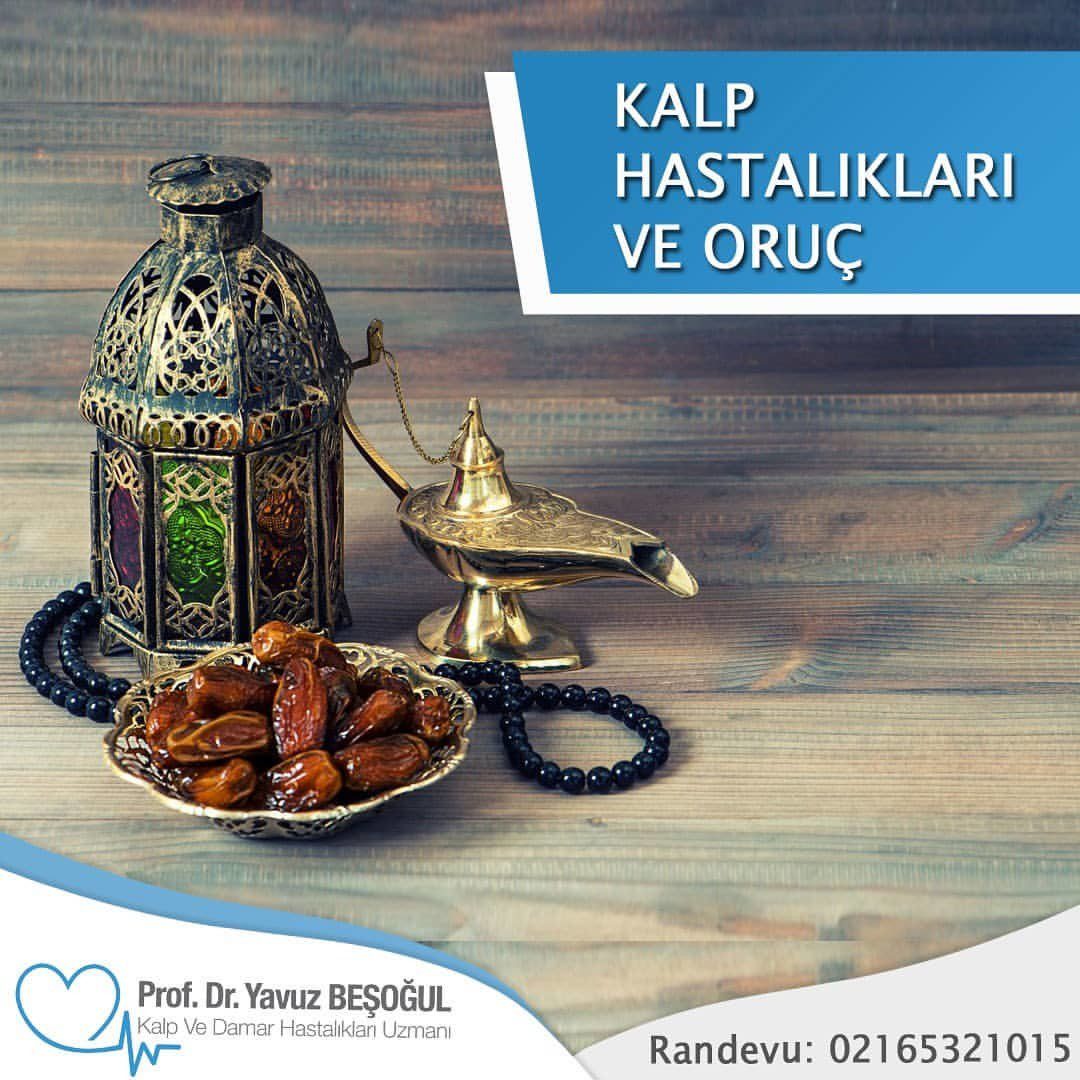Heart valve diseases involve dysfunction of the heart’s valves, which regulate blood flow between chambers. Common conditions include stenosis, where the valve narrows, and regurgitation, where the valve does not close properly, leading to leakage.
Mitral valve disease often causes shortness of breath, fatigue, and irregular heartbeat. Severe cases may lead to atrial enlargement and pulmonary hypertension if not treated in a timely manner.
Aortic valve disease manifests with chest pain, fainting, and heart failure symptoms. Narrowing of this valve places strain on the left ventricle, potentially resulting in life-threatening complications if untreated.
Diagnosis typically requires echocardiography, supplemented by MRI or CT when necessary. Treatment ranges from medication and regular monitoring to surgical valve repair or replacement, depending on severity and progression.
How Heart Valve Diseases Affect the Body’s Blood Circulation?
Our heart can be likened to a sophisticated pump that works non-stop. Inside this pump are four one-way doors that keep the blood moving in the right direction at all times and prevent it from escaping backwards. These gates, the valves, open and close in perfect harmony with every beat of the heart. In this way, contaminated blood is pumped into the lungs to be cleaned and cleaned blood is pumped out of the heart to be distributed throughout the body. Our valves, the cornerstones of this perfect system, are the tricuspid, pulmonary, mitral and aortic valves.
So what happens if one of these valves fails? Valvular heart disease is mainly caused by two mechanical problems. The first is the inability to open the valve, or “stenosis”. This can be likened to a rusted door that can only be opened with a small gap. The heart has to exert a much higher pressure than normal to push the blood through this narrow gap. Over time, this constant overload leads to fatigue, thickening and stiffening of the heart muscle.
The second main problem is the inability of the valve to close, i.e. “regurgitation” or “leakage” (regurgitation). This is similar to a faucet with a broken seal or a door that is constantly leaking water. Because the valve does not close properly, some of the blood pumped forward escapes backwards with each heartbeat. This condition, popularly known as “heart valve blood leakage”, reduces the efficiency of the heart. The heart has to work twice as hard both to pump the blood the body needs forward and to compensate for this backward leakage. Over time, this causes the heart to enlarge and its pumping power to weaken, leading to heart failure.
What are congenital and acquired valvular heart diseases?
The origin of valvular heart disease can be analyzed under two main headings. While some people are born with this problem, many develop it later in life due to various factors. Making this distinction helps us to understand the course of the disease and the approach to treatment.
Congenital heart valve diseases are caused by a defect in the development of the heart while the baby is in the womb. The most common of these conditions is when the aortic valve develops with two leaflets (bicuspid) when it should normally have three leaflets (tricuspid). Many people with a bicuspid aortic valve can live for many years without any problems. However, this structural difference makes the valve more prone to premature wear and calcification. For this reason, problems such as aortic stenosis, which are normally seen in older people, may appear as early as the 50s or 60s in these people.
Acquired valvular heart disease occurs when valves that were completely normal at birth deteriorate over time. There are many factors that play a role in the development of this condition. Some of these factors can be controlled, which gives us an important responsibility to protect our heart health. The main causes of acquired valvular heart disease are as follows:
- Age-related wear and tear (degeneration)
- Rheumatic fever
- Infective endocarditis (heart valve infection)
- Damage following a heart attack
- Diseases of the heart muscle (cardiomyopathy)
- Uncontrolled high blood pressure
- High cholesterol
- Diabetes
- Connective tissue diseases such as Marfan syndrome
- Radiotherapy to the chest area
What Symptoms Does Aortic Valve Disease Cause in the Body?
The aortic valve is located at the beginning of the aorta, the main artery that exits the left ventricle of the heart and carries oxygen-rich blood throughout the body. As it is the body’s main blood outlet, problems with this valve can lead to serious symptoms affecting the entire circulatory system.
Aortic Stenosis
Aortic stenosis is a narrowing of the aortic valve opening when the aortic valve leaflets calcify, harden and stick together over time. The left ventricle, the heart’s main pumping chamber, has to work against enormous pressure to send blood through this narrow opening to the rest of the body. This is similar to squeezing the end of a garden hose with your finger, which increases the pressure inside to make the water flow more freely. Aortic stenosis usually does not cause any significant symptoms until the disease is at an advanced stage. However, when symptoms do appear, this can be a sign that the condition is getting serious and it is vital to contact a specialist without delay. The most typical symptoms of aortic stenosis are:
- Chest pain or a feeling of tightness (angina)
- Dizziness
- Fainting (syncope), especially during exertion
- Shortness of breath on exertion (dyspnea)
- Palpitations
- Unusual fatigue and weakness
Aortic Insufficiency (Regurgitation)
In aortic insufficiency, the problem is that the valve fails to close. Therefore, some of the blood pumped into the body leaks backwards through the aorta into the left ventricle of the heart during each heart relaxation. This causes a constant “volume overload” in the heart. As the heart has to pump both the blood it needs to send to the body and this leaking blood back into the heart, it becomes tired, enlarged and its contractile strength weakens over time. Aortic insufficiency can also progress insidiously for years. Symptoms usually appear when heart failure begins to develop. The main symptoms of aortic insufficiency:
- Shortness of breath, especially when lying down or at night
- Palpitations or feeling a strong heartbeat
- Fatigue and quick fatigue
- Swelling in the ankles and legs (edema)
- Wide pulse pressure (increased difference between large and small blood pressure)
What are the symptoms of mitral valve diseases?
The mitral valve is the valve that controls the passage of oxygen-rich blood, which is cleaned in our lungs, from the left atrium of the heart to the left ventricle, the main pumping chamber. Because it is directly connected to the lungs, mitral valve diseases often cause respiratory symptoms. one of the first problems that comes to mind when it comes to “symptoms of heart leakage” is usually related to the mitral valve.
Mitral Stenosis
Mitral stenosis is a narrowing of the mitral valve opening. The most common cause of this condition is a history of rheumatic fever that has been inadequately treated. Because of the narrowing, clean blood from the lungs cannot pass freely to the heart’s main pump. As a result, blood begins to pool first in the left atrium and then backwards in the lungs. This leads to increased pressure and blood pooling in the lungs (pulmonary congestion). Symptoms of mitral stenosis usually appear gradually. The most common complaints seen in patients are as follows:
Shortness of breath (the most common symptom; initially with exertion, progressively even at rest)
- Fatigue and weakness
- Palpitations (an enlarged left atrium can lead to a rhythm disorder called “atrial fibrillation”)
- Cough with blood (hemoptysis)
- Swelling in the legs in advanced stages
- Pinkish-purple discoloration of the face and cheeks (mitral face)
Mitral Regurgitation (Regurgitation)
Mitral regurgitation is a condition in which the mitral valve fails to close completely and blood escapes from the left ventricle backwards into the left atrium. This raises the question “is a heart valve leak dangerous?”. Yes, while mild leaks usually do not cause problems, severe leaks put a serious strain on the heart and can be dangerous if left untreated. As the heart has to pump extra blood with each beat, both the left atrium and the left ventricle enlarge over time and the heart muscle weakens. In developed countries, the most common cause of this condition is mitral valve prolapse, which we will discuss shortly. Mild mitral regurgitation is usually asymptomatic. Symptoms as the disease progresses:
- Shortness of breath, especially during activity or when lying flat
- Fatigue and weakness
- Palpitations or irregular heartbeat
- Swelling of the feet and ankles
Mitral Valve Prolapse (MVP)
MVP is a condition in which the mitral valve leaflets are structurally more flexible and loose than normal. When the heart contracts, these loose leaflets bulge or sag slightly backwards into the left atrium, like a parachute. This condition is quite common in the general population and in most people it is completely harmless and does not require any treatment. However, in some people, it can cause a variety of symptoms or progress over time to severe mitral regurgitation. Possible symptoms that some people with MVP may experience:
- Palpitations
- Atypical chest pain (usually sharp and not related to exertion)
- Fatigue
- Dizziness
- Anxiety and panic attack-like conditions
What are the Rarer Heart Valve Diseases and Their Symptoms?
Diseases of the tricuspid and pulmonary valves on the right side of the heart are rarer than those on the left side. Because these valves manage the circulation of deoxygenated blood coming from the body, problems with these valves often cause systemic symptoms such as fluid accumulation in the body.
Tricuspid Valve Diseases
The tricuspid valve controls the passage of dirty blood from the body from the right atrium to the right ventricle. Problems with this valve cause blood to pool in the body’s circulation. While tricuspid stenosis is very rare, tricuspid regurgitation (leakage) is more common and usually develops secondary to another heart problem, such as high lung pressure (pulmonary hypertension) or left heart failure. Symptoms of tricuspid valve diseases reflect the accumulation of blood in the body:
- Swelling in the legs, ankles and abdomen (edema and ascites)
- Fatigue and weakness
- Marked fullness and pulsations in the neck veins
- Enlarged liver and pain in the upper right side of the abdomen
- Loss of appetite
Pulmonary Valve Diseases
The pulmonary valve is located at the head of the pulmonary artery, which carries blood from the right ventricle to the lungs for purification. Diseases of this valve are largely congenital anomalies. The most common is pulmonary stenosis. This causes the right ventricle to strain excessively to pump blood to the lungs. Mild cases are usually asymptomatic. However, in moderate to severe cases, some symptoms may occur, especially during exertion:
- Fatigue and shortness of breath
- Chest pain
- Dizziness or fainting
- Bruising (cyanosis) in infants
Which methods are used to diagnose suspected valvular heart disease?
If a patient has symptoms suggestive of valvular heart disease, the path to diagnosis usually starts with a careful medical examination and is clarified by modern diagnostic methods. This process is like putting together pieces of a jigsaw puzzle; each test adds an important piece to see the whole picture.
The first and most basic step in the diagnostic process is to listen to the patient’s complaints and perform a detailed physical examination. The abnormal sounds heard when listening to your heart with a stethoscope, called “murmurs”, are the sound of the turbulent flow of blood as it passes through a narrowed or leaky valve. Although this sound is often the first physical sign of a valve disease, it is not enough for a definitive diagnosis.
The most valuable method for definitive diagnosis and determining the severity of the disease is echocardiography (ECHO), also known as ultrasound of the heart. This test clearly shows the structure of the valves, their movement, the degree of stenosis or leakage and the effects on the heart muscle. The main methods used in the diagnostic process are:
- Physical examination and listening with a stethoscope
- Echocardiography (ECHO)
- Electrocardiogram (ECG)
- Chest X-ray
- Effort (Stress) Tests
- Transesophageal Echocardiography (TEE)
- Cardiac Magnetic Resonance (MRI) or Computed Tomography (CT)
- Cardiac Catheterization (Angiography)
Why should a specialist be consulted when symptoms of valvular heart disease are detected?
Symptoms such as shortness of breath, fatigue, palpitations or swelling in your body are an important distress signal from your heart. Ignoring these signals by blaming them on “old age”, “a stressful day” or “fatigue” can lead to irreversible or even impossible damage to your heart over time. This is because most valvular heart diseases are progressive in nature. A valve leak or stenosis that is mild today can gradually worsen over the years into a serious problem.
Remember that your heart tries to compensate for a while to adapt to the extra load created by the damaged valve. For this reason, you may not feel any symptoms for many years. But even during this quiet period, the underlying mechanical problem persists and the heart gradually tires. When symptoms appear, it is often a sign that the heart’s compensatory mechanisms have reached their end and it is asking for help.
Left untreated, serious valve disease can lead to a domino effect of life-threatening complications. Knowing these risks will help you better understand why you should take the symptoms seriously. The main risks are:
- Heart failure
- Stroke (paralysis)
- Rhythm disorders (arrhythmias)
- Sudden cardiac death
Today, the treatment of valvular heart disease is a highly individualized process, with no “one right” solution. The treatment decision is based not only on the severity of the disease, but also on the patient’s age, general health, lifestyle and expectations. Managing this complex decision process requires the experience of a specialized cardiovascular surgeon and a multidisciplinary cardiac team led by him/her. There are a number of modern treatment options to consider when determining the best course of treatment for you:
- Medication
- Cover repair
- Cover replacement (mechanical or biological covers)
- Minimally invasive surgery (small incision surgery)
- Robotic surgery
- TAVI (Transcatheter Aortic Valve Replacement)
- MitraClip (Transcatheter Mitral Valve Repair)
Ultimately, listening to your body’s signals and taking the right action in time is the most effective way to protect your heart health. Consulting a cardiovascular surgeon ensures that the correct diagnosis is made, your risks are assessed and a state-of-the-art and effective treatment plan tailored specifically for you is created. With early diagnosis and the right treatment, valvular heart disease can be successfully managed and patients can return to healthy, active lives.
Frequently Asked Questions
What are valvular heart diseases?
These are diseases caused by incomplete closure (insufficiency) or narrowing (stenosis) of one or more of the four valves in the heart.
How many valves are there in the heart and what do they do?
There are four heart valves: mitral, tricuspid, aortic and pulmonary. They keep the blood flowing in the right direction in the heart.
What are the most common valvular heart diseases?
Aortic stenosis, mitral regurgitation, mitral stenosis and aortic regurgitation are among the most common heart valve diseases.
What are the symptoms of valve disease?
Symptoms may include shortness of breath, fatigue, palpitations, chest pain, dizziness, edema and fainting.
What are the characteristics of mitral valve diseases?
It is located between the left atrium and the left ventricle. Mitral stenosis and mitral regurgitation are the most common disorders.
What are the symptoms of aortic valve diseases?
It can cause serious symptoms such as chest pain, fainting, shortness of breath on exertion and sudden cardiac arrest.
What are tricuspid valve diseases?
It is usually associated with right heart failure. Tricuspid regurgitation is the most common condition.
Are pulmonary valve diseases common?
It is rare. It is usually seen in congenital diseases.
Are valve diseases congenital?
It can be both congenital (congenital) and acquired (acquired). Rheumatic diseases and aging are the most common causes.
What is rheumatic valve disease?
It is a chronic disease affecting the mitral and aortic valves that usually develops after childhood throat infections.
How are valve diseases diagnosed?
Echocardiography (ECHO) visualizes the structure and function of the valves. ECG and chest x-ray are supportive tests.
What happens if valve disease progresses?
Serious complications such as heart failure, rhythm disturbances and embolism can develop.
Does valve disease require surgery?
Valve repair or valve replacement surgery is recommended for moderate to severe valve diseases.
Do artificial caps last a lifetime?
Mechanical valves last longer but require the use of blood thinners. Biological caps have a shorter lifespan but require less medication.
How should people with valve disease be monitored?
Regular check-ups, medication, infection prevention and lifestyle adjustments are necessary.

Prof. Dr. Yavuz Beşoğul graduated from Erciyes University Faculty of Medicine in 1989 and completed his specialization in Cardiovascular Surgery in 1996. Between 1997 and 2012, he served at Eskişehir Osmangazi University Faculty of Medicine as Assistant Professor, Associate Professor, and Professor, respectively. Prof. Dr. Beşoğul, one of the pioneers of minimally invasive cardiovascular surgery in Türkiye, has specialized in closed-heart surgeries, underarm heart valve surgery, beating-heart bypass, and peripheral vascular surgery. He worked at Florence Nightingale Kızıltoprak Hospital between 2012–2014, Medicana Çamlıca Hospital between 2014–2017, and İstinye University (Medical Park) Hospital between 2017–2023. With over 100 publications and one book chapter, Prof. Dr. Beşoğul has contributed significantly to the medical literature and is known for his minimally invasive approaches that prioritize patient safety and rapid recovery.








